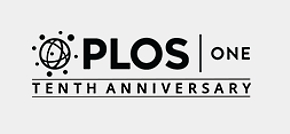The authors of two articles:
Beata Pepłońska, Agnieszka Bukowska, Wojciech Sobala, Association of Rotating Night Shift Work with BMI and Abdominal Obesity among Nurses and Midwives PLoS ONE (7) 21, 2015
oraz
Maria J. López , Esteve Fernández, Giuseppe Gorini, Hanns Moshammer, Kinga Polanska, Luke Clancy, Bertrand Dautzenberg, Agnes Delrieu, Giovanni Invernizzi, Glòria Muñoz, Jose Precioso, Ario Ruprecht, Peter Stansty, Wojciech Hanke, Manel Nebot, Exposure to Secondhand Smoke in Terraces and Other Outdoor Areas of Hospitality Venues in Eight European Countries PLoS ONE (8) 1, 2012
have received a congratulatory letter from the publisher informing about the high altmetrics indexes of interest in the publication.
The article on the relation between rotating night shift work of nurses and midwives and the increase in BMI and abdominal obesity is among top 25% of the most viewed and cited PLoS ONE works in 2015. From the date of publication, it had 6749 views, 16 cites and 17 social media shares.
The other article describing the assessment of levels of exposure to secondhand smoke in terraces and other outdoor areas of hospitality venues in eight European countries, is among top 25% of the most viewed and cited PLoS ONE works in 2012. From the date of publication, it had 4163 views, 24 cites and 4 social media shares.
PLoS ONE is a reviewed scientific journal published by the Public Library of Science on an open-access basis. All content in PLoS ONE is published under a free Creative Commons license. Texts are indexed, among others in Google Scholar, Scopus, PubMed, PubMed Central and MEDLINE.
The PLoS ONE publisher uses new article level metrics (ALM) for publications on the Internet. These metrics indicate the number of cites in the databases (e.g. Web of Science, Scopus), social media (e.g. Twitter, Facebook), programs for managing research papers (e.g. Mendeley, CiteULike), blogs and also count the number of hits on the article’s website. ALM is a new approach to evaluating single research papers and it increases the importance of social media in the science assessment. It is also an alternative to the overall evaluation of journals currently applied and giving them Impact Factor.
Any comments on the page?
Fill-in the form


![Cover: Mechanisms of chemical carcinogenesis and their impact on dose-response relationships - the examples of dioxin and benzo[a]pyrene ECNIS 6](http://oldwww.imp.lodz.pl/gal_cache/tnm_3d122379f2b61a3.jpg)








